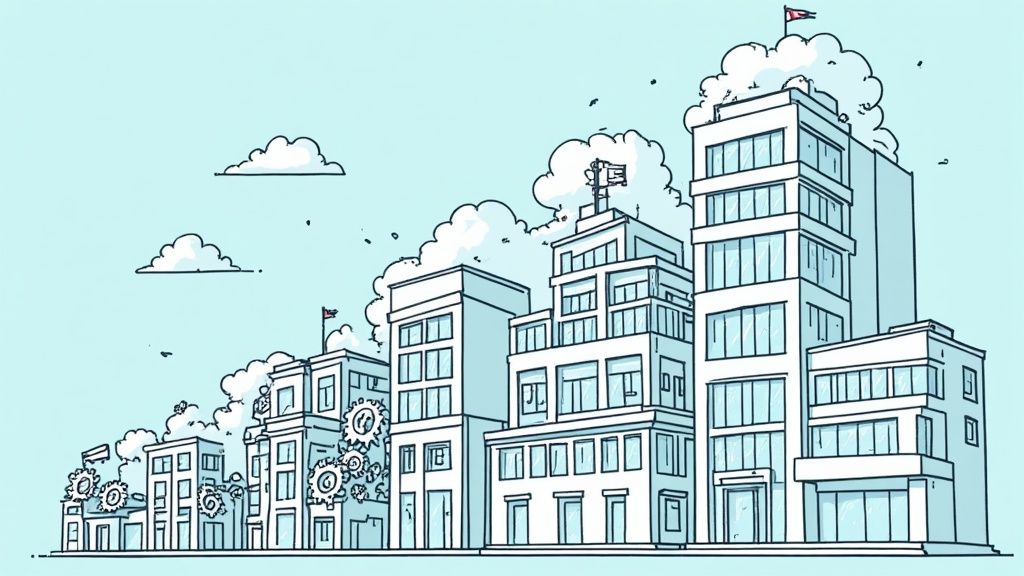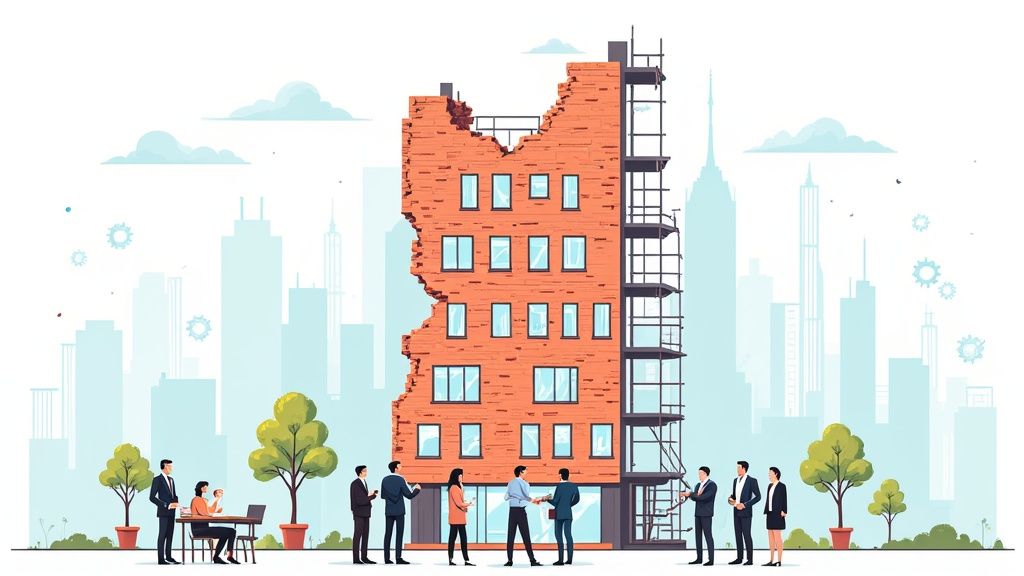Business transformation gets thrown around a lot, but what does it actually mean? It’s not about a new piece of software or a one-off project. It is a fundamental, strategic shift in how your entire organisation works, thinks, and delivers value. It means rethinking everything from your business model and daily processes to your company culture, all to make a significant leap forward in performance and market position.
What Is Business Transformation Really About?

Let's cut through the jargon. At its heart, business transformation is about making deep, coordinated changes across your company to become more competitive and resilient. Think of it less like redecorating a room and more like renovating a house. You are not just repainting the walls; you are rebuilding the foundations to create a stronger, more capable structure for the future.
This kind of change does not happen in a vacuum. It is usually triggered by major shifts in the market, new technologies, or evolving customer expectations. It is a deliberate response to the reality that what worked yesterday probably will not work tomorrow. The real goal is to ensure your organisation is not just surviving but is built to thrive.
People, Process, Then Technology
We have seen it time and again: true transformation starts with people, not platforms. A common mistake is to lead with technology, assuming a shiny new CRM or AI tool will magically fix deep-rooted problems. This almost always fails because it ignores the human element. Lasting change only happens when your team understands the ‘why’ behind the shift and has the skills and support to adapt.
Transformation is not just an initiative; it's a change in the company's DNA. It integrates people, processes, and technology to deliver sustained value and adapt to a constantly changing business environment.
Once your people are on board, you can start redesigning the processes they use every day. This is where you can aim for genuine operational excellence by ironing out bottlenecks and simplifying workflows. Only then does it make sense to bring in technology that supports these improved, people-centric ways of working. When technology is the final piece of the puzzle, it enables change rather than causing friction.
We see these three elements as the essential pillars for any change that is meant to stick.
The Three Pillars of Lasting Transformation
Putting these pillars in the right order—People, Process, then Technology—is the difference between a project that fizzles out and a transformation that delivers lasting value.
From Strategy to Sustainable Impact
Ultimately, business transformation is about moving from a reactive state—always putting out fires—to a proactive one. It is about building an organisation that is more open, capable, and operationally sustainable. It frees up your team’s time, enables sharper decisions, and embeds capabilities that last long after any consultant has left the building.
This journey is focused on delivering real, tangible outcomes, not just ticking off tasks on a project plan. The goal is to build digital sovereignty: where your organisation truly owns its data, its processes, and its future. It is a fundamental commitment to simply working better.












